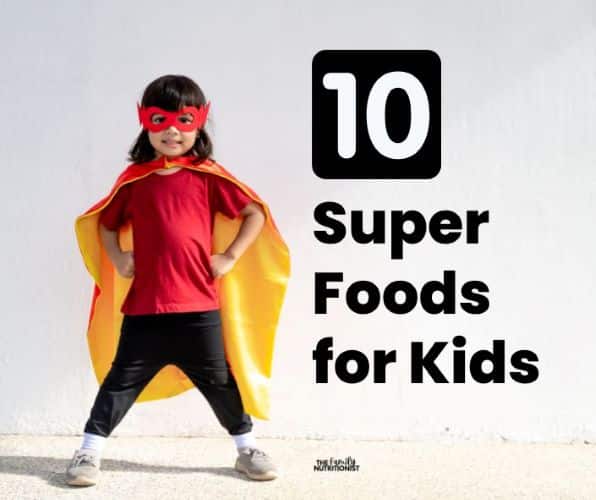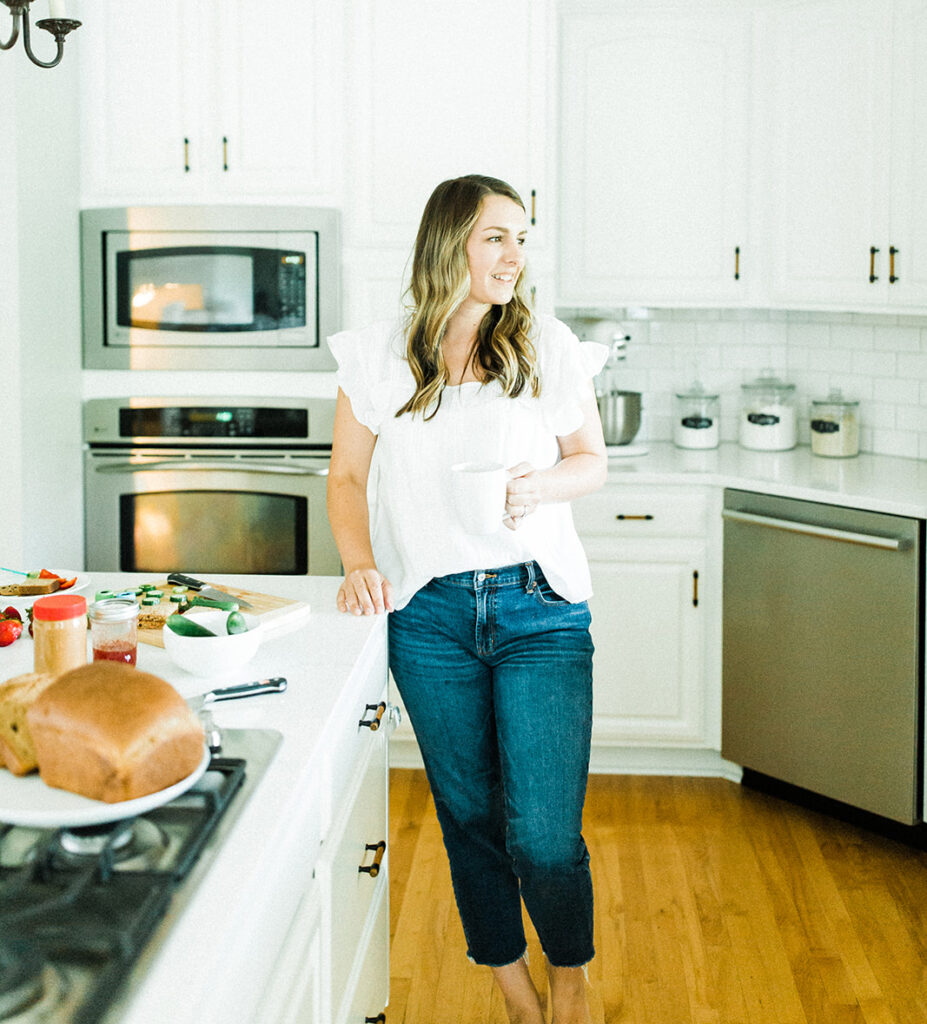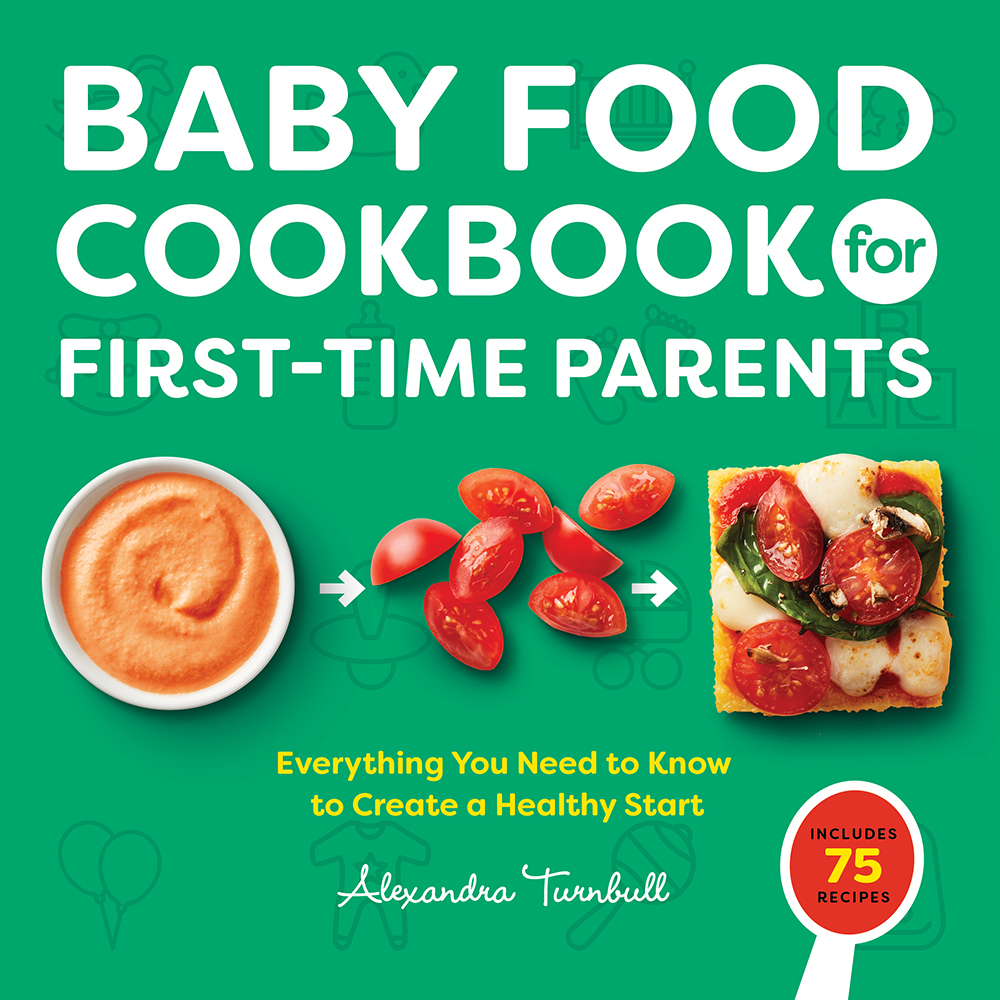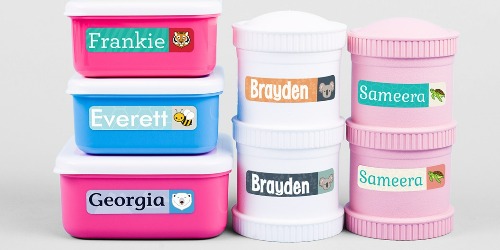This post may contain affiliate links. This article is for informational and educational purposes only and is not/should not be used for medical advice. If you’re concerned about your child’s mental, emotional, or physical health, always speak with your child’s health care team. Read our disclosure here.
If you’re a parent like many others out there, including myself, that would like to squeeze in a few more nutrients for your kids, you’re in the right place.
As a dietitian specializing in pediatrics and a mom of two children, I’m here to share with you 10 super foods for kids that will give them more nutritional bang with each bite.
Table of Contents
Super Foods for Kids

It’s important to know that while there are many super foods for kids, eating a wide variety of foods is more valuable than eating a lot of one particular food.
However, I’m always looking for opportunities to incorporate these specific 10 super foods for kids into my own kid’s foods! Let’s check them out!
Nuts
There are more than 20 different types of edible nuts available around the world. The most commonly consumed nuts are almonds, peanuts, pistachios, walnuts, pecans, cashews, macadamia nuts, pine nuts, and brazil nuts.
Whole nuts are choking hazards for children four and under. Cut whole nuts into tiny pieces, spread thin layers of nut butters, or crush into a “nut dust” to sprinkle on foods like yogurt or oatmeal.
If your child has a nut allergy, seeds and seed butters are also a great super food for kids.
Nut Nutrition
Nuts are a great source of:
- Fiber
- Antioxidants
- Vitamins and minerals
- Healthy fats
- Protein
| Nutrients | 1 oz Walnuts |
| Calories | 190 calories |
| Fat | 18 g |
| Polyunsaturated Fat | 13 g |
| Monounsaturated Fat | 2.5 g |
| Carbohydrates | 4 g |
| Dietary Fiber | 2 g |
| Added Sugars | 0 g |
| Protein | 4 g |
| Vitamin D | 0 mcg |
| Calcium | 30 mg |
| Iron | 0.8 mg |
| Potassium | 130 mg |
*Nutrition will vary slightly based on nut and product
How to Use Nuts
The wide variety of types and textures of nuts allows them to be used in so many different ways including:
- Smoothies
- Baked goods
- Oatmeal
- Trail mix
- Salad toppings
Fun ways to use nuts
- Crushed and mixed into sprinkles to top on yogurt or ice cream
- Added to baked goods
- Homemade trail mix
Nut Butters
Some children don’t like nuts in their whole form, but may really enjoy nut butter. Nut butters have a similar nutrient profile to whole nuts, except for a few added ingredients like oil, salt and sugar depending on the brand you buy.
Nut Butter Nutrition
Nut butters are a great source of:
- Fiber
- Antioxidants
- Vitamins and minerals
- Healthy fats
- Protein
| Nutrients | 2 Tbsp Jif Natural Peanut Butter |
| Calories | 190 calories |
| Fat | 16 g |
| Carbohydrates | 8 g |
| Dietary Fiber | 3 g |
| Added Sugars | 2 g |
| Protein | 7 g |
| Vitamin D | 0 mcg |
| Calcium | 18 mg |
| Iron | 0.5 mg |
| Potassium | 192 mg |
*Nutrition will vary based on nut butter
If you choose a more natural peanut butter, it may contain a little less fat and possibly no added sugar. Choose a nut butter your family enjoys.
How to Use Nut Butters
Nut butters are a safer option for children four and under when spread thinly. Avoid large globs of nut butters, as this can be a choking hazard as well.
Nut butters, like whole nuts, can be added to many recipes and foods such as:
- Smoothies
- Sauces
- Dips
- Baked Goods
- Energy balls
- Spreads
- Oatmeal
- Yogurt
- Fruit
Fun ways to enjoy nut butters
- Peanut butter snack board
- Ants on a log
- Apple nachos
- Dips for fruits and veggies
Seeds
Seeds, similar to nuts, are another one of my favorite super foods for kids that’s easy to add to your kid’s diet.
There are many different kinds of edible seeds, but the most common are pumpkin, flax seeds, sunflower seeds, hemp hearts, and chia seeds.
Seed Nutrition
Each variety of seed will provide slightly different nutrients, but in general seeds are a great source of:
- Fiber
- Antioxidants
- Vitamins and minerals
- Healthy fats
- Protein
Seeds can be difficult for children to chew and if not chewed thoroughly, they may pass completely through (if you know what I mean) without your child being able to reap their nutritional benefits.
Opting for ground or milled forms of seeds can be an easier way for your child to digest and absorb their beneficial nutrients. You can also ground them up in a coffee grinder or with a meat tenderizer in a ziploc bag.
I love using Tinysprouts flax seeds, chia seeds, and hemp hearts because they are cold milled for maximum nutrient absorption and easy digestion. They also add probiotics and vitamin D to some of their products.
Tinysprouts Superseed Boosters
| Nutrients | 2 Tbsp Tinysprouts Milled Chia Seeds |
| Calories | 50calories |
| Fat | 3 g |
| Polyunsaturated Fat | 2.5 g |
| Monounsaturated Fat | 0 g |
| Carbohydrates | 4 g |
| Dietary Fiber | 3 g |
| Added Sugars | 0 g |
| Protein | 2 g |
| Vitamin D | 3.8 mcg |
| Calcium | 60 mg |
| Iron | 0.8 mg |
| Potassium | 40 mg |
*Nutrition will vary slightly based on seed
How to Use Seeds
Seeds can be added to many recipes and foods such as:
- Smoothies
- Dips
- Baked Goods
- Energy balls
- Add to spreads
- Sprinkle on toast
- Oatmeal
- Added to jelly or jam
- Yogurt
- French toast batter
Fun ways to enjoy seeds
- Use milled or ground flaxseeds as “sprinkles”
- Whip into jelly for a pb and j
Avocado
While most fruit is generally low in fat and calories, avocados are quite the opposite, but in a good way!
Yes, avocados are considered a fruit, technically a berry, and they’re loaded with many beneficial nutrients such as heart healthy fats, fiber, and vitamins and minerals making them one of my favorite super foods for kids.
Avocado Nutrition
- Healthy fat
- Fiber
- Magnesium
- Vitamin B6
- Vitamin C
- Vitamin E
- Folate
- Potassium
| Nutrients | Avocado ¼ cup pureed |
| Calories | 92 calories |
| Fat | 8.5 g |
| Polyunsaturated Fat | 1 g |
| Monounsaturated Fat | 5 g |
| Carbohydrates | 5 g |
| Dietary Fiber | 4 g |
| Added Sugars | 0 g |
| Protein | 1 g |
| Vitamin D | 0 mcg |
| Calcium | 7 mg |
| Iron | 0.3 mg |
| Potassium | 280 mg |
How to Use Avocados
- Avocado toast
- Guacamole
- Dip
- Smoothies
- Add to baked goods
Berries
One thing you realize as a parent is how much you spend on fresh berries. I never realized that I should have planned for a “berry budget” before I had kids.
Berries seem to be a well-liked fruit for kids and understandably so. They’re nature’s candy anyways.
The most common berries eaten by children include strawberries, blueberries, blackberries and raspberries.
Berry Nutrition
Berries are jam-packed (get it?) with loads of vitamins, minerals, fiber, and antioxidants and are extremely versatile when it comes to adding them into your child’s diet.
| Nutrients | Raspberries ¼ cup |
| Calories | 50 calories |
| Fat | 0 g |
| Polyunsaturated Fat | 0 g |
| Monounsaturated Fat | 0 g |
| Carbohydrates | 12 g |
| Dietary Fiber | 6.5 g |
| Added Sugars | 0 g |
| Protein | 1 g |
| Vitamin D | 0 mcg |
| Calcium | 25 mg |
| Iron | 0.7 mg |
| Potassium | 150 mg |
*Nutrients will vary slightly based on the berry
How to Use Berries
Berries are great eaten fresh, but frozen, dried, or freeze-dried are great options too!
- Fresh
- Yogurt
- Oatmeal
- Smoothies
- Smashed on toast
- Baked goods
- Salads
Fun ways to enjoy berries:
- Add one to a food pick
- String a few on a kabob
- Use toothpicks to connect berries and build a structure
Spinach
Spinach isn’t always put in the “kid-friendly” category when it comes to food and rightfully so. It can be bitter, hard to chew, and green – which sometimes is an automatic “yuck” for kids.
While it’s likely that serving up a bowl of spinach salad or side of cooked spinach isn’t going to be your child’s first, or even second to last choice, adding spinach to foods in a subtle way can do the trick!
Spinach Nutrition
| Nutrients | Avocado 1 cup |
| Calories | 30 calories |
| Fat | 0 g |
| Polyunsaturated Fat | 0 g |
| Monounsaturated Fat | 0 g |
| Carbohydrates | 1 g |
| Dietary Fiber | 1 g |
| Added Sugars | 0 g |
| Protein | 1 g |
| Vitamin D | 0 mcg |
| Calcium | 30 mg |
| Iron | 0.8 mg |
| Potassium | 170 mg |
How to Use Spinach
Eggs
Eggs are another great option when it comes to super foods for kids. They’re an easy option to whip up in a pinch and extremely versatile.
Egg Nutrition
Eggs are a nutrient-rich powerhouse with essential vitamins and minerals. They contain high-quality protein and are one of the only foods that naturally contain vitamin D, which along with calcium, is critical for building strong bones.
For more about why kids should eat eggs, read here!
| Nutrients | 1 Large Egg |
| Calories | 72 calories |
| Fat | 5 g |
| Polyunsaturated Fat | 0 g |
| Monounsaturated Fat | 0 g |
| Carbohydrates | 0.6 g |
| Dietary Fiber | 0 g |
| Added Sugars | 0 g |
| Protein | 6 g |
| Vitamin D | 1.1 mcg |
| Calcium | 24 mg |
| Iron | 0.8 mg |
| Potassium | 66 mg |
How to Use Eggs
- Scrambled
- Hard boiled
- Omelet
- Breakfast casseroles
- Baked goods
- French toast
- Muffins
For more ways to cook eggs for picky eaters, read here.
Chickpea or Lentil Pasta
Another kid-friendly food that’s relatively easy to incorporate into meals is pasta. While “regular” pasta is enriched with valuable vitamins and minerals, switching it up with a chickpea or lentil based pasta can provide even more valuable nutrients!
Chickpea and Lentil Pasta Nutrition
| Nutrients/2 oz dry | Enriched Rotini | Chickpea Pasta | Lentil Pasta |
| Calories | 200 calories | 190 calories | 190 calories |
| Fat | 0 g | 3.5 g | 1.5 g |
| Carbohydrates | 42 g | 34 g | 34 g |
| Dietary Fiber | 3 g | 8 g | 6 g |
| Added Sugars | 0 g | 0 g | 0 g |
| Protein | 7 g | 11 g | 14 g |
| Calcium | 12 mg | 39 mg | 17 mg |
| Iron | 2 mg | 3 mg | 3 mg |
| Potassium | 118 mg | 622 mg | 518 mg |
*Nutrients may vary based on product
How to Use Chickpea and Lentil Pasta
You can easily swap chickpea or lentil pasta for any pasta recipe you’re using. These legume pastas are a slightly different texture and may take getting used to, but they’re worth it!
Side note – always keep a close eye on chickpea or lentil pasta because it is known for boiling over.
If you’re looking for a chickpea boxed mac n cheese, Goodles are my go-to and taste so good! They’re a bit more money, but the added nutrients are 100% worth it!
Bone Broth
Bone broth is made by simmering animal bones and connective tissues in water. Sounds weird, but it’s actually quite tasty and packs a lot of nutrients.
I love using bone broth to boil any pasta in, whip up a gravy, or really any place I need to use broth. While it is more spendy, if you have a picky eater, you’ll do just about anything to add more protein to each bite they take.
When you boil mac n cheese pasta with one container of Kettle and Fire chicken bone broth, you’re adding 19 more grams of protein to the entire box! Plus it adds to the overall flavor and creaminess.
And instead of draining out the liquid once your pasta is finished cooking, use less liquid and cover the pasta while its simmering so your pasta absorbs as much of the bone broth, and protein, as possible.
Although every pasta will be different, you can use 8 oz of dry pasta to one 16.9 oz container of Kettle and Fire bone broth without needing to drain the liquid.
While this blog post isn’t sponsored by Kettle and Fire, I was gifted their bone broth.
Bone Broth Nutrition
| Nutrients/1 cup | Bone Broth | Regular Broth |
| Calories | 38 cals | 5 cals |
| Protein | 9 g | 1 g |
| Calcium | 23 mg | 30 mg |
| Potassium | 237 mg | 40 mg |
How to Use Bone Broth
- Boil pasta with – like homemade spaghettios
- Soup
- Hot cocoa
- Gravy
- Anywhere you use broth in a recipe
Legumes
Legumes are a group of plants such as beans, lentils (pulses technically), peas, peanuts, and alfalfa.
Legumes are a great option for kids because they really function as both a protein and a vegetable – no they’re not a fruit despite the popular song.
With over 400 different types of beans (wow), you can also find many different ways to add beans to dishes without sacrificing flavor or texture.
If you have a picky eater who doesn’t like beans, sign up for my free 5 week Picky Eater TRY IT Challenge where I’ll teach you how to help your child try the most difficult foods for picky eaters, including beans.
Legume Nutrition
While each bean will provide its own unique nutrient profile, they all typically are rich in many different vitamins, minerals, protein, and fiber.
| Nutrients | Black Beans ¼ cup low sodium |
| Calories | 55 calories |
| Fat | 0 g |
| Carbohydrates | 10 g |
| Dietary Fiber | 2.5 g |
| Added Sugars | 0 g |
| Protein | 3.5 g |
| Vitamin D | 0 mcg |
| Calcium | 25 mg |
| Iron | 1 mg |
| Potassium | 490 mg |
*Nutrients will vary based on bean and/or product
How to Use Legumes
- As a side dish
- Quesadillas
- Steamed edamame
- Black Bean Brownies
- Soups
- Chili
- Casseroles – Chili Mac
- Beef and Lentil Sloppy Joes
Next Steps
It’s important to know that while there are many super foods for kids, eating a wide variety of foods is more valuable than eating a lot of one particular food.
The super foods for kids that I love to incorporate into my kids diets as a dietitian and mom are nuts, nut butters, seeds, avocado, berries, spinach, eggs, chickpea or lentil pasta, bone broth, and legumes.
If you’re looking for a simple place to add some of the super foods for kids, pick one to start with and add on as you’re able.
For more help getting your picky eater to eat more variety and try new foods without a fight, sign up for my free 5 week Picky Eater TRY IT challenge!





